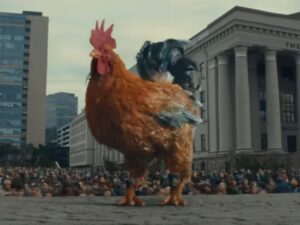[imagesource: Christian Bruna / Pool / AFP via Getty Images]
Part of what makes Formula One so exciting is that, at any moment, a driver can crash and drop out of the race.
A race director can also decide to take things into his own hands, turning an all-but-certain world championship title into a one-lap shootout.
Sorry, Lewis Hamilton fans. Still too soon.
While Mick Schumacher’s crash during Sunday’s Monaco Grand Prix wasn’t as dramatic as Frenchman Romain Grosjean’s fiery inferno in the 2020 Bahrain Grand Prix, seeing a car split into pieces after a collision with a wall is always cause for great concern.
Remarkably, Schumacher stepped out of the vehicle unscathed and walked away from the scene. He has modern-day safety regulations to thank for that.
Before we get to those regulations, which began after the 1994 death of Ayrton Senna, and the tech they have inspired, let’s see the crash.
Here’s a brief snippet which shows the German’s car splitting in two.
#DelPy | F1 |
El piloto alemán de Haas, Mick Schumacher, perdió el control de su auto en la vuelta 27 y tuvo un choque impactante en el Gran Premio de Mónaco.
Schumacher resultó ileso en el percance y salió caminando por sus propios medios.pic.twitter.com/TQ5tYjTDmv
— DELPY
(@delpynews) May 30, 2022
The crash, with multiple angles, has been uploaded to YouTube. Click on ‘Watch on YouTube’ and you’ll be redirected to that video.
Technical working groups tasked with increasing driver safety came up with the idea of a ‘survival cell’.
The idea, reports The Telegraph, was to “encompass a driver in something that is very difficult for him to get hurt, but perhaps for a few bruises”:
The survival cell is surrounded by crash structures. There’s a side impact structure and at the back of the car there’s an impact structure that you see the rear light on. Everything around the survival cell are things that you try to use to absorb the energy of an accident.

Big accidents will always look horrendous but as long as the survival cell is intact and nothing penetrates it the driver will be safe.
Sunday’s crash saw the gearbox separate from the front of the car, where the survival cell is housed.
He also collided with the energy-absorbing Tecpro barrier. This reduces the force of the impact suffered by drivers.
Senna’s deadly crash during the 1994 San Marino Grand Prix led to research which has changed the way driver safety is viewed:
One thing people learned after Senna’s fatal crash was that the G-force that a body can take can be a lot higher than what medical people thought. It’s just the duration. The objective was to try and make the car around the driver, to absorb the energies and not hurt the driver…
The theory behind this is that the more bits that come off the car, the more energy is absorbed while that is happening. In Schumacher’s case, the energy required to take the gearbox off slowed the car down.
Following the crash, Schumacher assured fans he was ready for the next challenge:
Thank you all for the kind messages, I’m ok. Focusing on the races ahead. #MSC47 pic.twitter.com/tVAMGTYr18
— Mick Schumacher (@SchumacherMick) May 30, 2022
Safety regulations and research is refined following each incident.
In that respect, Nicholas Latifi must be a popular chap.
[source:telegraph]






